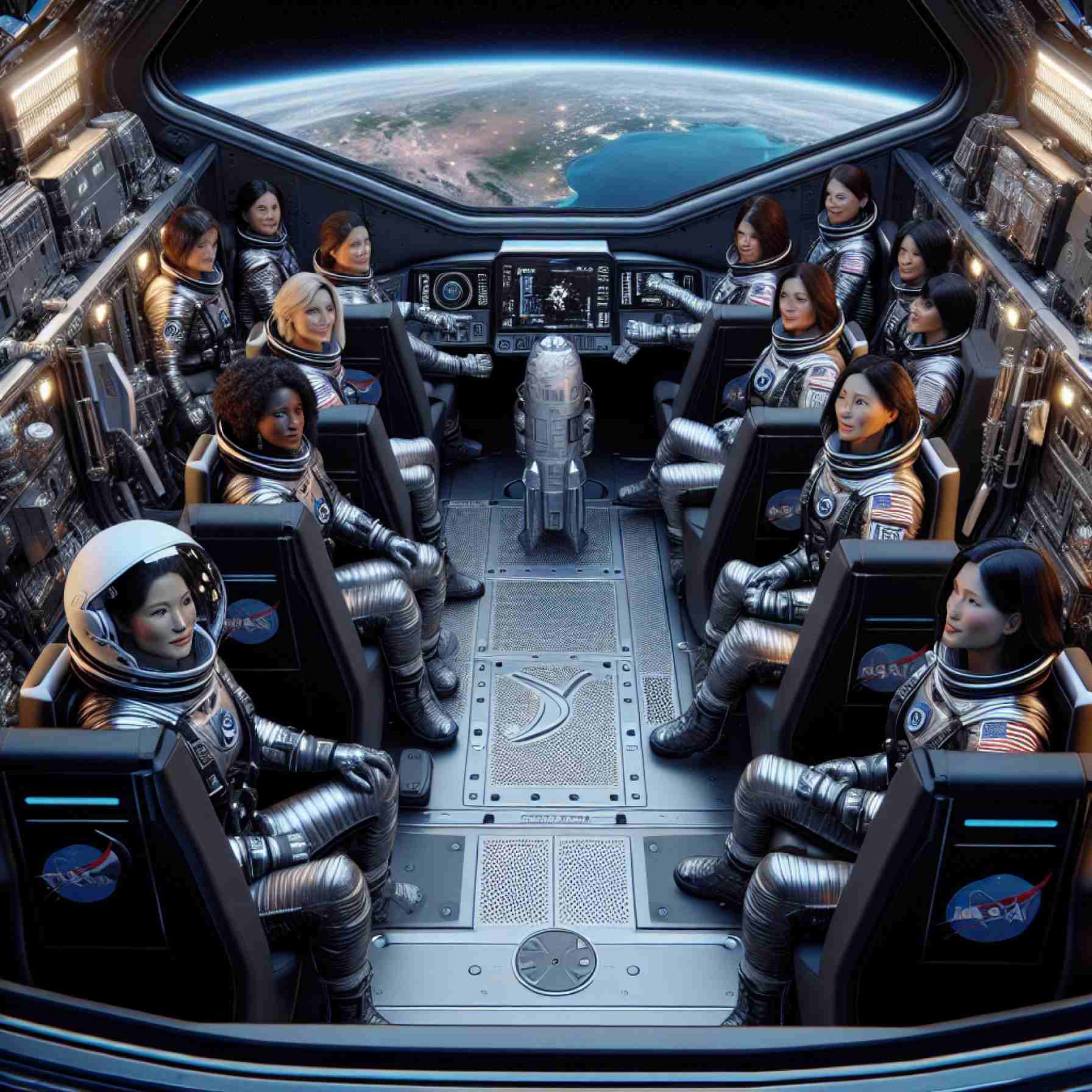- Historic Blue Origin flight featured six prominent women, highlighting female representation in space exploration.
- Participants included Katy Perry, Gayle King, and NASA’s Aisha Bowe, blending science and celebrity.
- The mission symbolized the blend of dreams and reality, showcasing Earth’s fragility and the universe’s vastness.
- Commercial space travel’s potential grows with Blue Origin’s reusable shuttle initiatives, aiming for accessibility.
- Flight costs are high, with potential future affordability through market competitors like Virgin Galactic.
- Attendees are pioneers, hinting at a future where space is within reach and exploration redefined.
- The event underscored that the sky’s no longer the limit, expanding human frontiers.
The star-studded Blue Origin flight saw six trailblazing women, a mix of celebrities and scientists, rise majestically from the Earth, leaving nothing but dust and wonder in their wake. As the rocket roared into the cosmos, Katy Perry, Gayle King, Lauren Sánchez, NASA genius Aisha Bowe, innovative thinker Amanda Nguyen, and cinematic mastermind Kerianne Flynn embarked on an odyssey that blurred the lines between dreams and reality.
For just 11 golden minutes, they gazed upon the curve of our planet, a view once reserved for astronauts and intrepid explorers. Up there, amidst the stars, they were suspended in the vast silence of space, a poignant reminder of both the vastness of the universe and the fragility of our world. Each had stories to tell upon their descent, narratives crafted from inspiration and awe, etched by the cosmic dance they witnessed.
This historic voyage didn’t merely mark another chapter in space tourism; it was a testament to the power of female representation in fields often left to men. Women today are not just reaching for the stars—they’re touching them.
While these seats in the cosmos come with a hefty price tag—speculative figures tingling at $28 million for initial public flights—the dream of commercial space travel is slowly clawing its way into reality. Blue Origin aims to democratize this otherworldly experience, a mission encased in their vision of “building a road to space for the benefit of Earth.” Their strides toward reusable space shuttles challenge traditional notions, marking a new era in exploration defined by creativity and ambition rather than confines.
With each successful flight, Blue Origin inches closer to making the stars accessible to everyone. Though there’s no definitive price bracket, competitor Virgin Galactic offers some perspective with tickets priced between $250,000 and $450,000, hinting at a future where more might be able to afford the cosmic vanish.
As attendees of this exhilarating journey, these women are not just passengers—they are pioneers. They stand as a reminder that the universe, though infinitely vast, holds countless possibilities. For now, space tourism remains a privilege of the few, but with every launch, Blue Origin is sculpting a world where the celestial becomes within reach and our understanding of frontiers quietly shifts. The takeaway? In this age of discovery, the sky is no longer the limit.
Breaking Barriers in Space: The Blue Origin Flight That Redefined Space Travel
Expanding Beyond the Source
Blue Origin’s recent historic flight, featuring six pioneering women, not only signifies an evolution in space tourism but also challenges the long-standing gender inequalities in aerospace. The mission was a step towards redefining who participates in exploratory endeavors, emphasizing inclusivity and representation.
Real-World Use Cases & Insights
1. Gender Representation in Space:
– Emerging Trends: Historically, space missions were predominantly male-dominated. This flight represents a broader societal shift in recognizing and facilitating women in STEM fields. According to a study by the National Science Foundation, women occupy only 28% of the STEM workforce, highlighting the importance of role models like the crew on this flight.
– Impact: Enhanced representation can inspire a new generation of young women to pursue careers in science, engineering, and space exploration.
2. Market Forecasts in Space Tourism:
– Industry Growth: The space tourism market, valued at approximately $700 million in 2023, is projected to surpass $3 billion by the end of the decade as per market analyses.
– Accessibility: While current ticket prices remain steep, like Virgin Galactic’s $450,000 range, advancements in technology and competition might lower prices, making space travel more accessible.
Controversies & Limitations
1. Environmental Concerns:
– Space travel contributes to considerable carbon emissions. Despite Blue Origin’s reusable rockets, experts from the World Economic Forum express concerns over the environmental impact of increased space flights.
– Blue Origin and other companies must balance commercialization with sustainable practices.
2. High Cost Barrier:
– The budget for such a journey remains an obstacle for widespread access, often criticized as a luxury only the elite can afford. The disparity between aspiration and affordability highlights socioeconomic divides.
Security and Technology
1. Technological Innovations:
– Blue Origin’s New Shepard rocket, designed for suborbital journeys, incorporates cutting-edge features ensuring passenger safety and mission success. Continued innovations will likely improve both safety and experience for future travelers.
How-To Steps for Aspiring Space Explorers
1. Stay Informed: Regularly follow updates from space agencies and companies like Blue Origin or SpaceX.
2. Engage in STEM Education: Building a career in science or technology can increase your chances of participating in space missions.
3. Participate in Simulators & Trainings: Experience zero-gravity simulations and space camps to prepare and stay motivated about space travel opportunities.
Conclusion: The Future of Space Exploration
With each successful mission, like the Blue Origin flight, we move closer to a reality where space isn’t just a dream but a destination. For readers aspiring to witness Earth’s grandeur from space:
– Actionable Tip: Consider courses or careers in aerospace, investing in this burgeoning industry either professionally or as an investor.
– Stay Updated: Engage with ongoing developments, as the industry landscape is rapidly evolving, presenting new opportunities for involvement.
By continually breaking barriers, both technological and societal, the sky is no longer the limit—it’s just the beginning.
